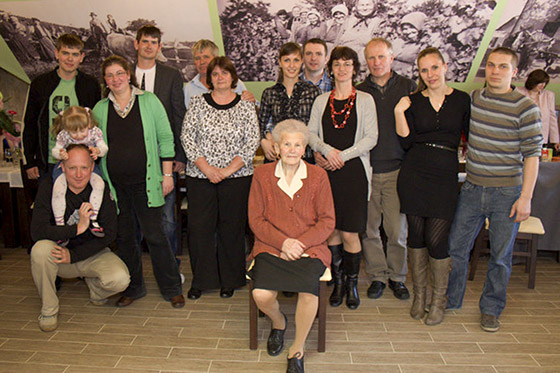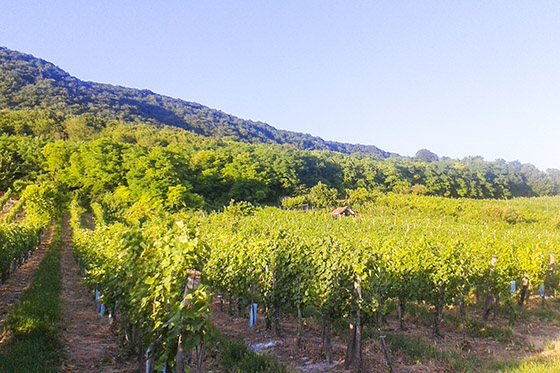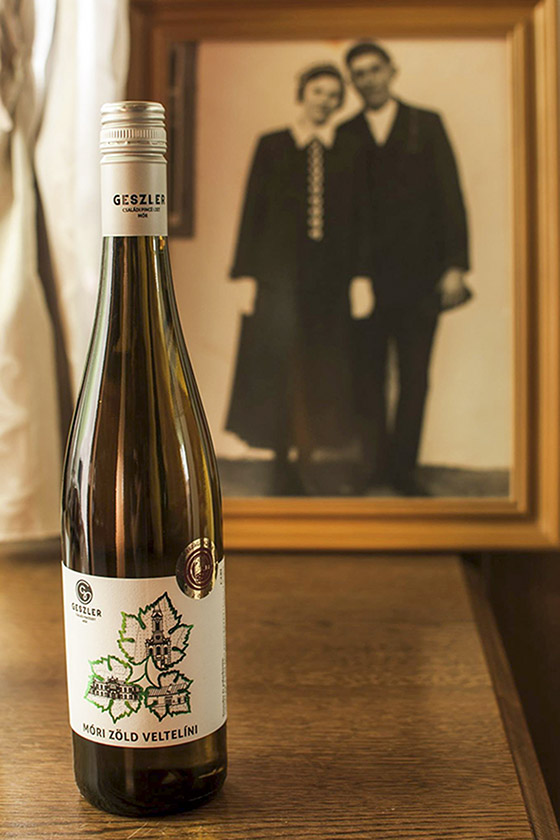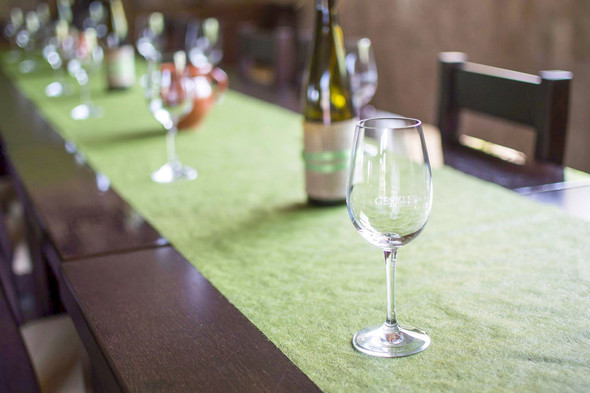Visiting the Geszler family and their 200-year-old Swabian cellar during the harvest time afforded me my first glimpse of the Mór wine region. Mór, with 559 hectares under vine, is one of Hungary’s smallest and perhaps least well-known wine regions. Situated between the Vértes and Bakony hills, it is a rather cool region with temperatures averaging 10°C, most of the rain falling in summer and only about 2000 days of sunshine per year. Its climate means that it is only really suitable for white wine.

József Geszler, fourth generation of the hardworking Swabian family to be involved with viticulture and winemaking, laments that you don’t see many wines from the region nowadays, although at the time of the system change in Hungary, they were much more prevalent. At that time, most people were working in the local cooperative and then going home and tending their own vines too. He also had to work in the vines as a child and decided that his path would be different and studied as a mechanical engineer. Although, he has now ended up back in the family business.
Unlike some other Hungarian regions, there has been little investment in Mór; it’s as if the region has been asleep for the last ten years ago. As a small region, cooperation is extremely important and the winemakers try to help each other, for example buying supplies together to help keep costs down. The local Wine Community decide together on the permitted varieties. They organise the Mór Wine Days and a wine competition. Only those obtaining good results in the competition may present their wines during the Wine Days. Interestingly, in the past the competition was conducted in an overly transparent way and many people were afraid of giving negative opinions about large producers’ wines, whereas nowadays it’s the opposite and there have been times when producers were unwilling to stand up and admit the wines were theirs!
Strolling in the vineyards past the Chardonnay and Ezerjó, we pass some of Csabi Miklós’s vines, where they are currently harvesting. Csabi is a key figure in the region, remarks József, especially for his charismatic personality and his aptitude for popularising the region’s wines thanks to his inventive names based on Mór (pronounced more), such as Roger, Demi and Gimme, and his modern, attractive labels.
At the top of the vineyards, overlooking the town of Mór, we are joined by József’s brother Imre and we taste two of the new wines, fresh and cloudy. First, the Királyleányka, only harvested several weeks before and then the Zenit, another typically Hungarian variety. Both are fresh, aromatic and fruity and demonstrate the high acidity which the region is famous for. Incidentally, their father, also József, can be credited with bringing the Királyleányka variety to the region, where it produces some attractive, aromatic wines. The Királyleányka was the first to be harvested this year, although they had left it longer on the vines to increase the body, and unfortunately also the alcohol, which was rather noticeable. They were lucky not to have suffered any hail damage, as many in the region did, and point out the necessity of having vines in various sites in order to spread the risk.

Ezerjó is however what consumers identify most closely with the region. In the past, Mór was even known for an aszú made from the variety, but nowadays only Tokaj is allowed to use this name. It is a difficult grape to work with, big-bunched and thin-skinned, the brothers say, and requires a lot of hard work in the vineyard. In addition to Ezerjó, Zenit and Királyleányka, they also have some Zöldveltelini (aka Grüner Veltliner) and Chardonnay. Planting of Chardonnay in the region was encouraged by Ákos Kamocsay, who is now at Hilltop. It gives wines with characterful acidity here thanks to the cool climate. Passing the small-bunched Chardonnay, still on the vine, on the way back down, they tell us that they’d like to make ice wine with it this year, if the birds don’t make off with all the fruit, that is.
As well as their varietal wines, they also produce some blends, whose names, Bakony and Vértes Kincse (treasure), refer to the local ranges of hills. Their labels are also designed with local patriotism in mind. Between two and four wines will go into their blends and, because the brothers are focussed on doing the best they can, they make 14-15 blends, which of course they need to keep trying to ensure they come to the optimum decision. At the end of this process though, they admit, their judgement may be slightly impaired, so they select three to taste again the following day.

Following the vineyard visit, we sit down to a hearty Swabian meal of ham, red cabbage and dumplings followed by wine soup.
What became clear from tasting the wines after lunch is that Mór is still very much seeking its way. The wines are well made, with high acidity often balanced by a touch of residual sugar to mask this, however, generally lacking distinct varietal character. The brothers point out that the majority of wine in Mór is drunk by those visiting the region, who are simply looking for a pleasant wine ‘that slips down nicely’. However, if Mór wants to break out of this limited sphere of consumers and make a more credible place for itself on the wine map in Hungary, it needs to produce more than just wines for the mid-market. Wineries also need to have a premium wine, a flagship wine that is the face of the region for the outside world. There is no question that this should be Ezerjó. The region has 75 hectares of Hungary’s 100 and is therefore the home of the variety named ‘a thousand boons’. The question remains though, what this wine should be like. Should it be reductive or oxidative, or even a blend of the two? The brothers are experimenting with both methods. As they say, they are trying to do something with Ezerjó, but they don’t yet know what the result will be. However, if they don’t try, well then, nothing will happen, will it?






